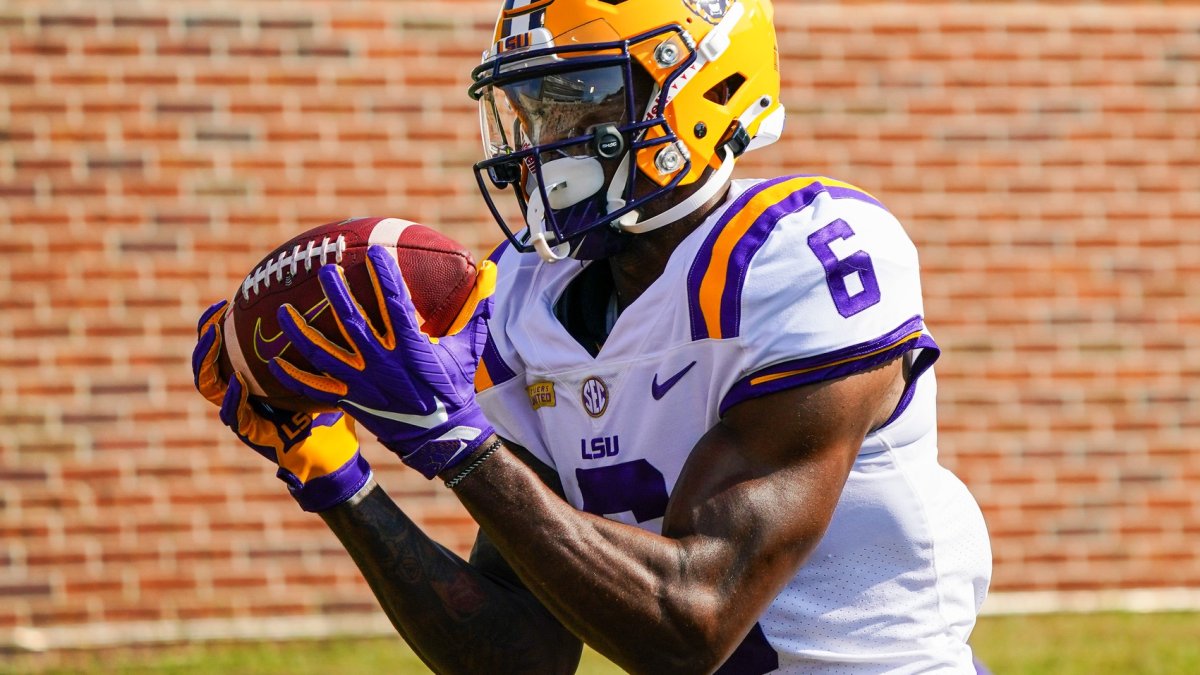Comparing current NFL draft prospects to those of years past is standard procedure in draft evaluation, though most comparisons are built on the memory recall and subjective opinion of the particular evaluator.
This will be the first in a series of articles comparing the 2021 draft prospects to prior years and picking out the most similar comps with a clearly delineated and quantifiable method.
PFF data scientist Eric Eager has done tremendous work building college-to-pro projections, which are built off the robust college data we’ve collected since 2014 and have been applied to exercises like building an “Analytics” Mock. In this analysis, I will use some of our advanced stats for comparison but primarily rely on traditional stats to go back further to compare the 2021 prospects to draft classes going back to 2006.
Without the NFL Scouting Combine this season, the important measurables like weight and 40-yard dash will be reported through the various pro days.
View PFF's 2021 NFL Draft position rankings:
QB | RB | WR | TE | T | iOL | DI | EDGE | LB | CB | S
METHODOLOGY
The comps below were derived from a two-step process. First, I converted all the most statistically relevant stats and measurables to percentiles based on the thousands of prospects who have entered the NFL since 2006 at each position. Then, I filtered the total universe of past prospects by those who had draft positions, weight and 40 times within a 10th percentile in either direction of LSU WR Terrace Marshall Jr. For undrafted players, I assigned a numerical draft position of 300.
The rest of the matching features were transformed by principal component analysis (PCA). I found the closest statistically comparable players by the euclidean distance between the players' principle components, listed in the top 10 below.
The metrics for PCA are career market shares for receiving yards and receiving touchdowns, best-season market shares for receiving yards and touchdowns, yards per route run, and yards per reception.
For Marshall's draft position, I’m using an estimate based on the mock data collected at GrindingTheMocks.com. For the weight and 40 time, I’m using the numbers from his pro day, with a 0.03-second penalty added to the 40 time to reflect the uncertainty of pro-day timed measurements.
Most comparable players
Marshall combines athleticism, size and pedigree that will be attractive to NFL front offices. He bolstered his draft profile with an impressive pro day, running a 4.38-second 40-yard dash at 205 pounds, jumping 39 inches in the vertical and recording a 10-foot-5 broad.
Marshall looks like a potential first-round receiver, one who not too long ago could have been considered underrated.
Terrace Marshall Jr🤯
Is he one of the most underrated prospects in the Draft?pic.twitter.com/Mk0ENIyrPg
— PFF College (@PFF_College) March 17, 2021

His red flag, at least superficially, is his weaker career production. He was a strong touchdown producer, with a career market share of 28%, but he was only at 16% in the more stable yards metric. The deeper context is that he played multiple seasons with 2020’s rookie phenom Justin Jefferson and the presumed first wide receiver off the board in 2021 in Ja’Marr Chase.
Marshall had the lead receiver role to himself in 2020, and he boosted his market shares for yards and touchdowns to 33% and 59%, respectively. He didn’t do it on huge volume either, accounting for a lighter 23% of team targets.
Exclusive content for premium subscribers

WANT TO KEEP READING?
Dominate Fantasy Football & Betting with AI-Powered Data & Tools Trusted By All 32 Teams
Already have a subscription? Log in




 © 2025 PFF - all rights reserved.
© 2025 PFF - all rights reserved.